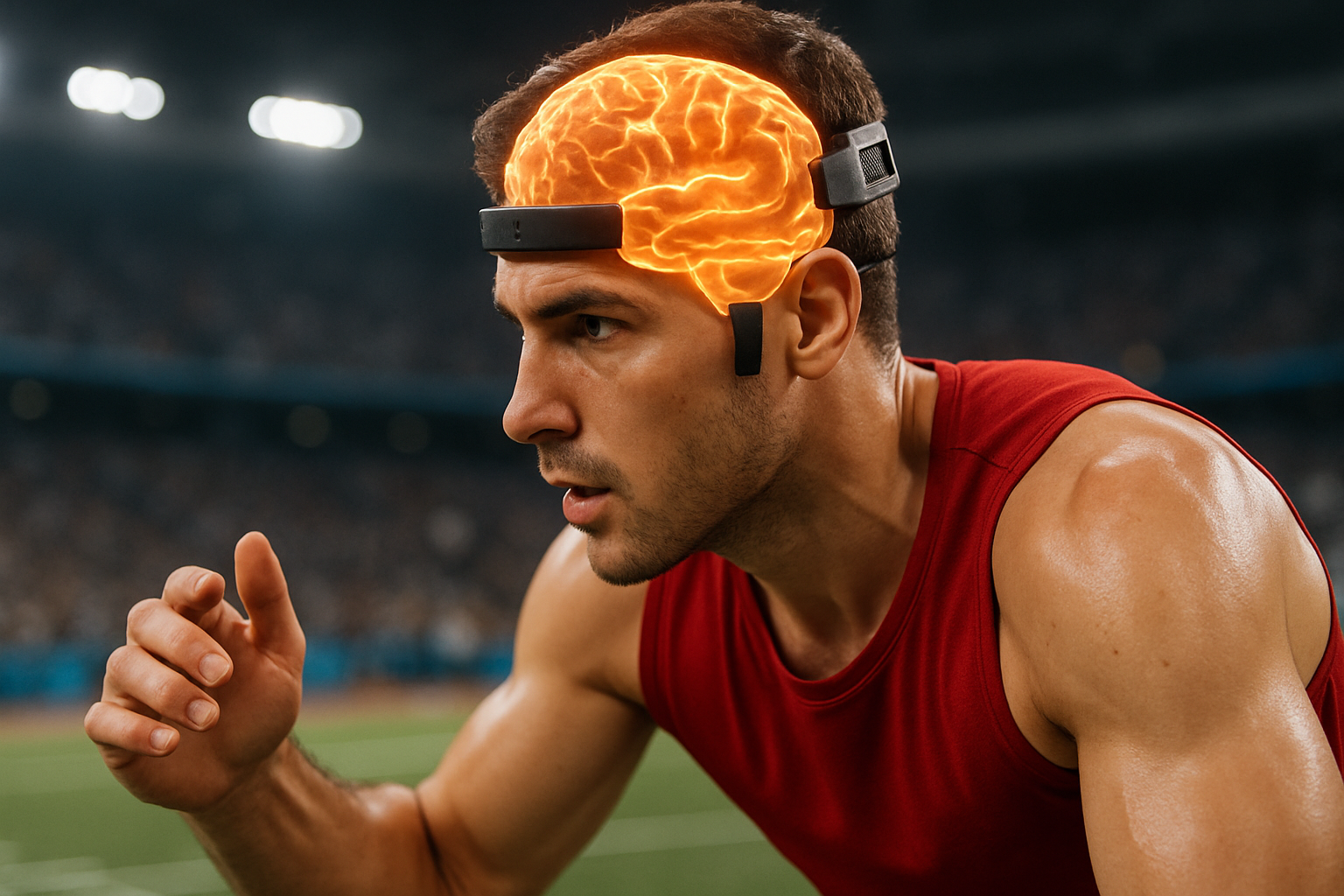Synchronizing Minds: The Neuroscience Behind Team Cohesion in Sports
In the realm of athletic excellence, a mysterious force binds teammates together, allowing them to anticipate each other's moves and react as one. This phenomenon, often described as team chemistry or cohesion, has long fascinated coaches, players, and fans alike. But what if this seemingly intangible connection has a biological basis? Recent neuroscientific research suggests that team synchrony might be more than just a metaphor—it could be happening in our brains.

In team sports, neural synchrony manifests as coordinated brain activity among players, particularly in regions associated with motor planning, decision-making, and social cognition. This alignment allows athletes to predict their teammates’ actions, respond swiftly to changing game situations, and execute complex plays with precision.
Research has shown that teams with higher levels of neural synchrony tend to perform better, exhibiting improved coordination, communication, and overall effectiveness on the field. This neural harmony extends beyond mere physical synchronization, encompassing shared mental models and collective decision-making processes.
The Role of Mirror Neurons in Team Dynamics
Mirror neurons, first discovered in the 1990s, play a crucial role in our ability to understand and imitate others’ actions. These specialized brain cells fire both when an individual performs an action and when they observe someone else performing the same action. In the context of team sports, mirror neurons facilitate rapid learning, empathy, and the development of shared motor repertoires among teammates.
Studies have revealed that experienced athletes show enhanced mirror neuron activity when observing sport-specific actions, particularly those of their teammates. This heightened neural mirroring contributes to the development of what coaches often refer to as “team intuition” or “collective intelligence.”
The activation of mirror neurons during team practices and games helps players internalize their teammates’ movement patterns, anticipate passes, and react instinctively to complex game situations. This neural mechanism underlies the seamless coordination often observed in well-practiced teams, where players seem to know exactly where their teammates will be without the need for verbal communication.
Oxytocin: The Chemical Glue of Team Bonding
Beyond neural synchrony and mirror neurons, the hormone oxytocin plays a significant role in fostering team cohesion. Often dubbed the “love hormone” or “cuddle chemical,” oxytocin is known for its role in social bonding, trust, and empathy. In the context of team sports, oxytocin release during group activities and physical contact contributes to the emotional bonds formed between teammates.
Research has shown that engaging in team sports can lead to increased oxytocin levels, which in turn promotes prosocial behaviors, reduces stress, and enhances trust among team members. This biochemical boost not only improves team dynamics but also contributes to better performance under pressure.
Interestingly, studies have found that synchronized physical activities, such as rowing or marching in unison, can lead to higher oxytocin release compared to individual exercises. This suggests that the very act of moving together as a team can strengthen social bonds and improve overall team cohesion through neurochemical pathways.
Training the Collective Brain: Neuroplasticity in Team Sports
The concept of neuroplasticity—the brain’s ability to reorganize itself by forming new neural connections—has profound implications for team sports. Through repeated practice and shared experiences, teammates can literally rewire their brains to work more effectively as a unit.
Coaches and sports scientists are now exploring ways to leverage neuroplasticity to enhance team performance. Techniques such as visualization exercises, mental rehearsal, and neurofeedback training are being employed to strengthen neural connections associated with team play and decision-making.
One innovative approach involves the use of brain-to-brain interfaces, where players’ brain signals are monitored and shared in real-time during training sessions. This technology allows teammates to literally “tune in” to each other’s neural patterns, potentially accelerating the development of team cohesion and shared mental models.
The Dark Side of Neural Synchrony: Groupthink and Performance Pressure
While neural synchrony generally enhances team performance, it’s important to note that excessive alignment can sometimes lead to negative outcomes. The phenomenon of groupthink, where the desire for harmony within a group overrides critical thinking and individual creativity, can be partly attributed to overly synchronized neural activity.
In sports, this can manifest as teams becoming too predictable in their strategies or failing to adapt to unexpected situations. Coaches must strike a balance between fostering team cohesion and maintaining individual autonomy and creativity within the group dynamic.
Additionally, the pressure to maintain neural synchrony can sometimes lead to increased performance anxiety, particularly in high-stakes situations. Players may become overly focused on aligning with their teammates’ mental states, potentially hindering their natural instincts and abilities.
Practical Applications: Enhancing Team Cohesion Through Neuroscience
Armed with insights from neuroscience, coaches and sports psychologists are developing new strategies to enhance team cohesion and performance. Some practical applications include:
-
Neurofeedback Training: Using EEG devices to help players visualize and align their brain activity during team exercises.
-
Mirror Neuron Activation Drills: Designing practice sessions that emphasize observation and imitation to strengthen mirror neuron networks.
-
Oxytocin-Boosting Activities: Incorporating team-building exercises and synchronized movements to promote oxytocin release and strengthen social bonds.
-
Mental Rehearsal Techniques: Utilizing guided imagery and visualization to reinforce shared mental models and improve neural synchrony.
-
Brain-Computer Interface Technology: Experimenting with cutting-edge tools that allow direct brain-to-brain communication during training sessions.
-
Neuroplasticity-Informed Practice Design: Structuring training regimens to maximize the brain’s adaptive potential and strengthen team-specific neural pathways.
-
Cognitive Diversity Training: Balancing synchrony-building exercises with activities that promote individual thinking to prevent groupthink.
The Future of Team Neuroscience in Sports
As our understanding of the brain’s role in team dynamics continues to evolve, we can expect to see even more innovative applications of neuroscience in sports. Future developments may include:
-
Real-time Neural Monitoring: Wearable devices that track team neural synchrony during games, providing coaches with insights into mental cohesion and fatigue.
-
Personalized Neuroplasticity Programs: Tailored brain training regimens designed to optimize each player’s neural contributions to the team.
-
AI-Assisted Team Composition: Advanced algorithms that use neurological data to predict optimal team combinations and strategies.
-
Virtual Reality Neural Synchronization: Immersive training environments that allow geographically dispersed teams to develop neural cohesion remotely.
-
Neuromodulation Techniques: Non-invasive brain stimulation methods to enhance team synchrony and performance in specific game situations.
Ethical Considerations and Future Challenges
As with any emerging field, the application of neuroscience in team sports raises important ethical questions. Issues of privacy, consent, and the potential for misuse of neurological data must be carefully addressed. There are also concerns about creating an unfair advantage or exacerbating existing inequalities in sports through access to advanced neurotechnology.
Moreover, as our ability to influence and manipulate brain function improves, the sports community will need to grapple with questions of authenticity and the nature of human performance. Where do we draw the line between legitimate performance enhancement and unethical manipulation of brain function?
A New Frontier in Sports Science
The exploration of team neuroscience in sports represents a fascinating convergence of biology, psychology, and athletic performance. By unraveling the neural mechanisms behind team cohesion, we are gaining unprecedented insights into the collective human potential.
As research in this field progresses, we can anticipate a transformation in how teams train, strategize, and perform. The future of sports may well be shaped by our growing understanding of the synchronized brain, offering new pathways to unlock the full potential of human collaboration and achievement.
While challenges and ethical considerations remain, the study of team neuroscience promises to revolutionize our approach to sports, providing a deeper appreciation for the remarkable capabilities of the human brain in collective action. As we continue to explore this frontier, we may discover that the true magic of teamwork lies not just in physical prowess, but in the beautiful synchrony of minds working as one.




